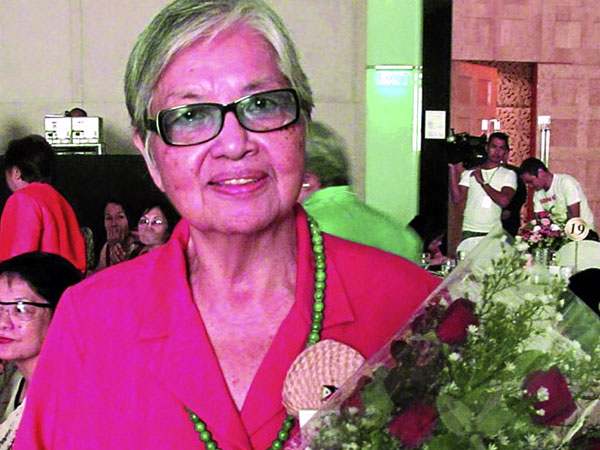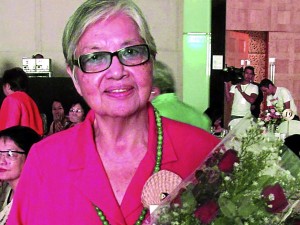
They put their lives on the line for their vision of a better society. Scores died or disappeared, more were tortured, but many have survived the martial law years from 1972 to 1981, or more accurately, 1986. But while some made the supreme sacrifice in their struggle for social change, a few have chosen to give up their aspirations for an easier life in the corridors of political power.
Forty years after, here’s a look back at some well-known martial law personalities who traveled the road less taken and found divergent paths to tread.
1. Jose Maria Sison
Known as the founder of the Communist Party of the Philippines (CPP), Joma came from a landed family in Cabugao, Ilocos Sur and describes himself in his Facebook profile as “a Filipino patriot, a proletarian revolutionary and internationalist. He is a Filipino statesman, known for his experience in and knowledge of the people.” This English lit major from the University of the Philippines who also took up masteral studies in comparative literature was the founding chair of the Kabataang Makabayan (KM), the largest militant youth and student organization in the country before martial law.
Captured in 1977, he was released by former President Corazon Aquino when Marcos was ousted in 1986. Joma remains in self-exile in Utrecht, The Netherlands, from where he issues official statements on the CPP position on current Philippine issues.
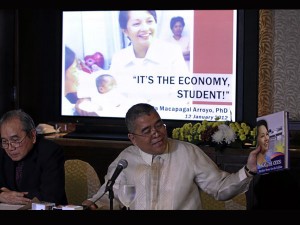
2. Nilo Tayag
UP student Nilo Salumbides Tayag, secretary general and later, national chairman of KM, went underground even before martial law. Arrested and detained for more than 11 years for subversion and rebellion, he was released in 1981 after which he took up theology studies at the National Seminary of the Iglesia Filipina Independiente. He was ordained in 1989 and became a consecrated Bishop of the Church in 1993.
He is a member of the Philippine Guardians Brotherhood, Inc., United Nations Association of the United States of America, World Wildlife Fund, Greenpeace and other organizations.
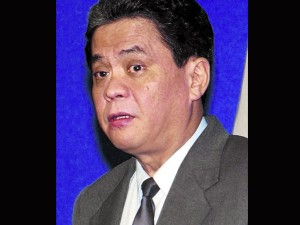
3. Enrique Voltaire Garcia III
Chair of the UP Student Council and editor in chief of the Philippine Collegian from 1965 to 1966, this lawyer joined anti-Marcos rallies and railed against the US military bases and parity rights. In 1971, he was elected delegate for Rizal in the Constitutional Convention. Arrested when martial law was declared in 1972, he was released and placed under house arrest shortly after. He remained a staunch nationalist and an advocate of civil liberties until his death of leukemia while under house arrest on March 2, 1973. He was just 30 years old.
4. Bonifacio P. Ilagan
Ilagan, one of the founders of KM in UP, immersed himself in cultural work after martial law, becoming chiefly a writer of historical plays for stage and television. He has since become a multi-awarded writer, winning major literary awards among them the Don Carlos Palanca Awards for Literature, the Cultural Center of the Philippines Literary Contest and the Palihang Aurelio V. Tolentino, the Catholic Mass Media Awards, Philippine Movie Press Club Star Awards and Gawad CCP. Two of his plays are featured in the CCP Encyclopedia of Philippine Art as major works in Philippine theater.
Ilagan has also ventured into video production and has written, directed and produced documentaries on Philippine history, politics, environment, values formation, and so on.
5. Gary Bocobo Olivar
Known more recently as the deputy presidential spokesman of former president Gloria Macapagal-Arroyo, Olivar was one of the more fiery speakers during the First Quarter Storm.
This UP graduate got his MBA from the Harvard Business School and has been a director of Mabuhay Vinyl Corp. since April 2011. He is also an Associate Partner at PT Andrew Tani Indonesia and Financial Services Consultant.
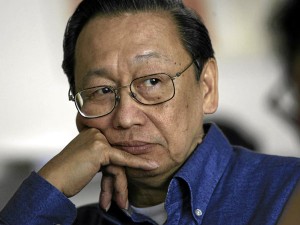
6. Baltazar Pinguel
Pinguel, the national spokesman of KM went underground when martial law was declared in 1972 but was arrested shortly after and tortured severely.
He became secretary general of Bagong Alyansang Makabayan but later sought US asylum which was granted in 1997. Since then, he has lived in Philadelphia, where he worked from 1992 to 2009 at the American Friends Service Committee, a Quaker peace and justice organization founded in 1917. Laid off because of the economic crisis in the US, his last title was program analyst for peace-building and prevention of conflict.
7. Judy M. Taguiwalo
FQS watchers might remember this member of the Malayang Kilusan ng Bagong Kababaihan (Makibaka), for that revealing shot that showed her and fellow FQS rallyists crammed into a passenger jeepney apparently to escape police truncheons. Taguiwalo went underground when martial law was declared in 1972 but was arrested twice.
Now an associate professor at the Department of Women and Development Studies, College of Social Work and Community Development at UP Diliman, she was also the founding national president and current national vice president for faculty of the All UP Academic Employees Union. This author of several publications on women and globalization is a member of the Asia Pacific Forum on Women, Law and Development, a regional women’s NGO with consultative status with the UN ECOSOC.
8. Charito Planas
Planas, a lawyer and human rights activist was jailed during martial law but escaped to the US through the backdoor disguised as a nun. Sources recall with much amusement how Planas at one point forgot that she was wearing a nun’s habit and proceeded to light up and smoke.
She was drafted for the Interim Batasang Pambansa elections in 1978 under the Lakas ng Bayan (Laban) ticket which included Benigno Aquino Jr., Aquilino Pimentel Jr. and activist Alex Boncayao. Laban ran against the Kilusang Bagong Lipunan ticket led by then First Lady Imelda Marcos.
After spending eight years in exile in the US, she came home to work with NGOs as an advocate of women’s issues. She also became Quezon City vice mayor in 1992, then president of the Quezon City Parks Development Foundation Inc. Shortly before the 2010 elections, she surfaced as spokesperson for the beleaguered former president Gloria Arroyo.
9. Horacio “Boy” Morales
Largely known as the executive vice president of the Development Academy of the Philippines who defected to the National Democratic Front on the night he was to receive his Ten Outstanding Young Men of the Philippines award in 1977, he was arrested in 1982 but was released by President Corazon Aquino in 1986.
In 1987, he ran for senator under the Partido ng Bayan party but lost. He served as President of the Philippine Rural Reconstruction Movement from 1986 to 1998, after which he was appointed Agrarian Reform secretary by former President Joseph Estrada. He also headed Estrada’s political party, the Partido ng Masang Pilipino, and served as board chairman of the Development Academy of the Philippines during Estrada’s term until his ouster in 2001.
He was active as a consultant for several policy NGOs and was a trustee of the PRRM until his death of a heart attack on Feb. 29, 2012.
10. Edicio de la Torre
A former head the underground Christians for National Liberation, Father Ed De la Torre was arrested during martial law.
He later joined the administration of deposed president Joseph Estrada and served as director general of the Technical Education and Skills Development Authority. He also became a campaigner of close Estrada friend and presidential aspirant Fernando Poe Jr. De la Torre is the founder and current president of the Education for Life Foundation, an NGO that runs a grassroots leadership-formation program.
11. Rigoberto Tiglao
Used to head the Manila-Rizal chapter of the Communist Party of the Philippines, became a business writer and later joined the administration of former President Arroyo as press secretary and as ambassador to Greece. He writes a regular column for the Philippine Daily Inquirer.
12. Edgar Jopson
Atenean Edjop was chair of the National Union of Students of the Philippines, then labeled as a moderate group compared to the more militant KM during the FQS rallies.
Described as a mere “son of a grocer” by Marcos when he demanded that the former president put in writing his promise not to run for office again, Edjop went underground and was killed in a military raid in Davao in 1982.
13. Francisco Tatad
This Marcos information minister mainly remembered for having read Proclamation 1081 that placed the entire Philippines under Martial Law on Sept. 21, 1972, resigned from the cabinet six years before the Edsa revolt. He won a seat in the 1978 Batasan election and joined the opposition led by the Cebu bloc of lawmakers—the Pusyon Bisaya—one of whose members was Hilario Davide, a future chief justice. Tatad later became a senator.
Tatad writes an opinion column for the Manila Standard, and in his Aug. 13, 2012 column titled “Can the dictatorship be stopped?” wrote: “But (Aquino) has, by definition, become authoritarian, and whether simply benign or inept, the ’dictatorship’ has arrived.”
14. Ramon Isberto
Isberto was arrested in 1977 on subversion charges for being a member of the CPP and/or the NPA, and detained at Camp Bagong Diwa in Taguig. He later became a union leader in Business World, and worked in print and broadcast media for 17 years as editor, executive producer and talk show host.
Today, he is the concurrent Public Affairs Head of the Philippines’ biggest telecommunications firm, the Philippine Long Distance Telephone Company, and its wireless subsidiary, Smart Communications Inc. Outside of the PLDT Group, Isberto is a fellow of the independent poll organization Social Weather Stations, a member of the National Press Club, the Philippine Futuristic Society, and the Economic Journalists Association of the Philippines.
15. Bernabe Buscayno
Also called Kumander Dante, he founded the New People’s Army, the military wing of the CPP. Under him, the NPA grew to spread throughout the Philippines and went on to challenge the Marcos regime. He was captured in 1976 but was released when Marcos was ousted in 1986.
He ran for senator under the Partido ng Bayan but lost. He went back to farming and set up cooperatives in Tarlac that unfortunately, became casualties of the Mt. Pinatubo eruption in 1991. In 2000, he set up the Tarlac Integrated Agricultural Modernization Cooperative that seeks to promote mechanization in local farms. •
(Editor’s note: This is not a comprehensive list, but the best we can manage given limited space and available sources that include: the Files of the International League of Peoples’ Struggle, June 12 2010; www.bandilapartylist.tk posted on Oct. 24, 2011; Ven J. Tesoro, writer, prison officer, artist, Philippine prisons blog; Wikipedia; Bantayog ng Mga Bayani website; panitikan.com.ph; Cristina DC Pastor, The FilAm, March 15, 2011; qc-circle.com.ph; PDI Archives, PDI Research Archives; www.boymorales.com; https://hrmorales.co.cc; “U.G.” by Benjamin Pimentel; The Third Fundraising Congress, 2008).

